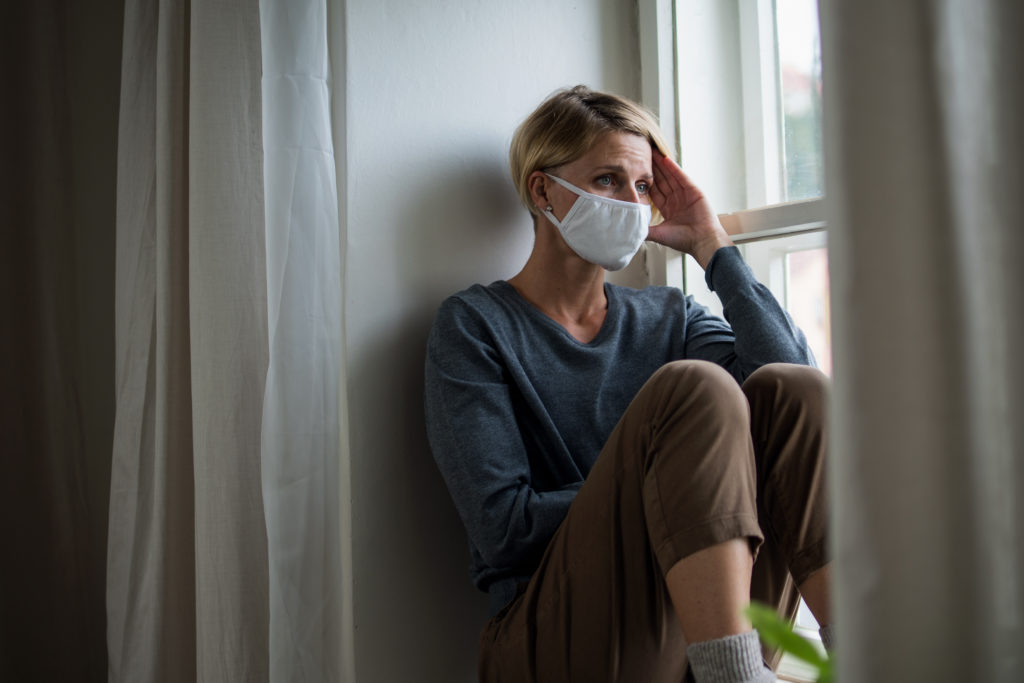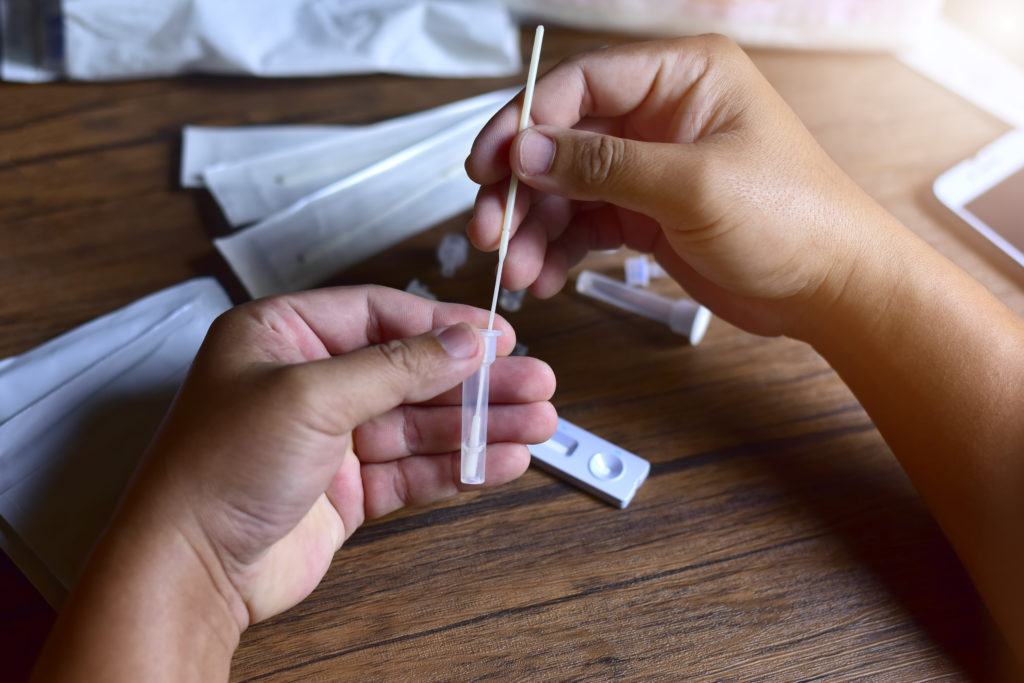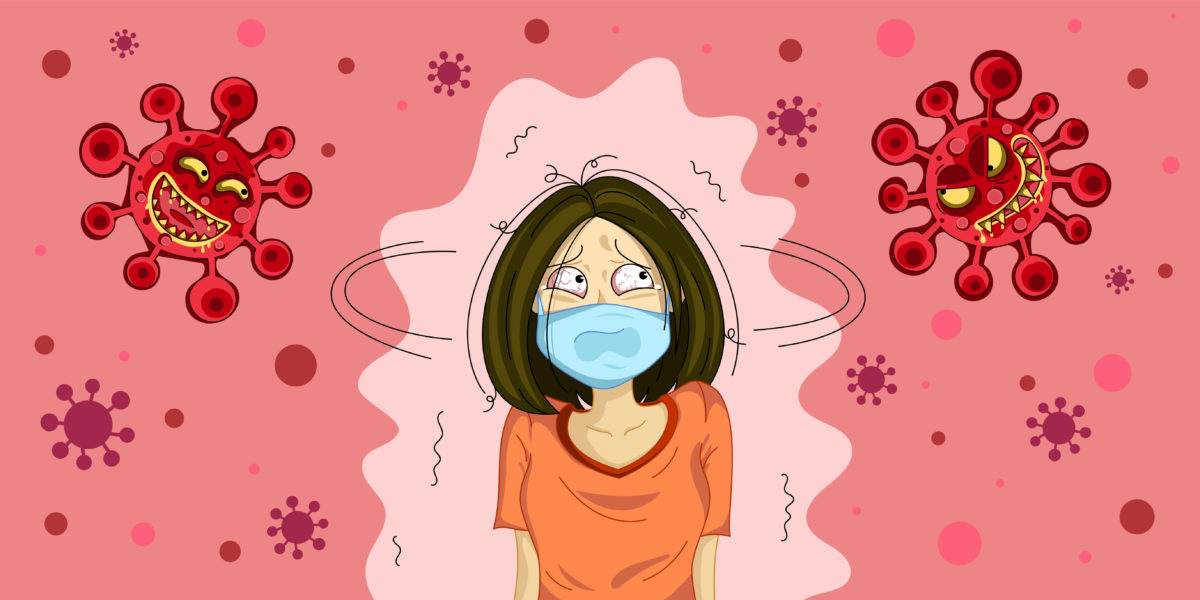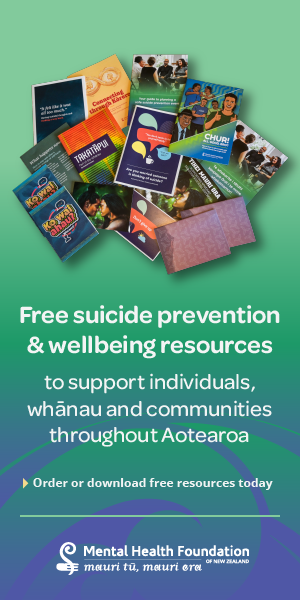KEY POINTS
- Many people will experience significant symptomatic health anxiety on testing positive for COVID-19, regardless of the variant.
- Some symptoms of health anxiety can also be symptoms of COVID-19, so will heighten anxiety and potentially drive unnecessary help-seeking at a time when health services are likely to be struggling.
- General practice will have a key role to play as part of wider care of people with COVID-19, in recognising and supporting people with this form of health anxiety.
- Normalising an anxious response, providing balanced information and reassurance, and promoting usual coping strategies and online resources will help most patients.
Overseas experience and local modelling tell us that we are facing a three-month period of extensive community spread of the Omicron variant of COVID-19, before we enter the endemic phase and learn to live with this virus.
With our high immunisation rates, and lower rates of severe symptoms with Omicron, we may not see the devastation that has accompanied widespread community transmission of earlier variants overseas.
However, this comes after two years of mainstream and social-media saturation regarding COVID-19, and, as we know, not all information is good information. A lot of the “news” we have heard is alarmist and has little or no basis in fact. Added to this constant stream of catastrophic stories and images has been the active disinformation promoted – it seems we live in the age of conspiracy theory becoming “fact”!
Mental health consequences
The consequence of this is a level of fear of COVID-19 that is out of proportion to the actual risk most people face, especially with Omicron. Associated with that fear is significant stigma, adding to the challenges anyone who tests positive will face.
Anecdotal local experience (including that of health professionals) and overseas data tell us that a positive COVID-19 test is likely to evoke significant health anxiety in many people. As with any anxiety-provoking life situation, most will cope and manage this themselves, but for some, it will trigger problematic health anxiety, which is likely to complicate assessment and management of their viral illness.
Health anxiety (or “illness anxiety disorder” as it is called in the Diagnostic and Statistical Manual of Mental Disorders, Fifth Edition1) is a type of anxiety disorder where people spend excessive amounts of time worrying about being or becoming unwell. Typical symptoms include obsessive scanning of the body for symptoms, catastrophic interpretation of these symptoms, worrying about normal bodily sensations and/or interpreting these as signs of illness, obsessively researching diseases and/or taking extreme action to avoid exposure to disease.
With health anxiety, people are hypervigilant for bodily symptoms and then have catastrophic thoughts regarding the significance of those symptoms.
Not surprisingly, people with health anxiety tend to present frequently in primary care.
So, while there will be people in our communities (and among health professionals) who have a degree of health anxiety in anticipation of the risk of contracting COVID-19, it is likely we will see a bigger group for whom the experience of contracting COVID-19 and testing positive will trigger significant anxiety.
The little research that has been done on this topic suggests female gender and having a pre-existing mental or physical health condition are the main predictors of risk of COVID-19 health anxiety, along with living alone and poor tolerance of uncertainty.2,3

Significant anxiety of any kind is accompanied by a range of physical symptoms, such as light-headedness, chest tightness or pain, subjective difficulty breathing/breathlessness, palpitations, muscle tightness/pain, nausea and diarrhoea.
With health anxiety, people are hypervigilant for bodily symptoms and then have catastrophic thoughts regarding the significance of those symptoms; a quick Google search will reveal that most of the above somatic anxiety symptoms are also symptoms of COVID-19.
Complicating assessment in an environment where community management of COVID-positive cases will be virtual, where possible, is that the more serious symptoms of infection, such as breathlessness, are of course anxiety provoking.
Assessment and management
Assessment of any patient positive for COVID-19 begins with careful review of physical symptoms of the viral infection. As positive case numbers increase, supply of pulse oximeters will be restricted to those with significant risk factors, so, for everyone else, assessment will rely fully on history and the signs that can be assessed virtually. Most COVID-19 symptoms are not seen in anxiety, and the presence of overt anxiety does not preclude serious infection!
However, the great strength of primary care is that, in general, patients have a high level of trust in the team.
The key clue to the presence of health anxiety is where the level of illness-related anxiety significantly exceeds the apparent severity of symptoms. Where this is the case, gentle enquiry regarding how the patient is coping with testing positive and having to self-isolate is a good place to start, along with normalising the situation as being stressful!
Most people with health anxiety are aware their worry is excessive and will be relieved to share that worry.
The key clue to the presence of health anxiety is where the level of illness-related anxiety significantly exceeds the apparent severity of symptoms.
Also enquire about whether they are safe in their living situation and have access to the funds and food they need – worry in the face of these issues is normal and can be managed by referral to your local COVID-19 response NGO support services.

For most patients experiencing COVID-19 health anxiety, the following simple strategies will help them manage this:
- Normalise an anxious response, and reassure them that this is common in your experience – “they are not alone”.
- Provide further reassurance that:
-
- for most people, Omicron is a mild illness
- for those who are immunised, risk is minimal
- you are not concerned (share your assessment)
- the clinic team will maintain proactive contact, but, of course, if symptoms do worsen, they should contact the clinic.
- Give advice to focus on what they can control, such as:
-
- avoid googling symptoms and media stories about COVID-19
- engage in quiet activities that provide distraction – reading, TV, puzzles, video games, cooking, etc
- maintain physical activity within the limits of current symptoms
- reach out to usual social supports – “a worry shared is a worry halved”.
- For practices where the integrated primary mental health and addiction model has been implemented (see “How to treat”), warm handover – where the patient is referred to the practice’s health improvement practitioner (HIP) − will provide further support and assistance with strategies to manage anxiety.
- Provide links to the evidence-based online resources that are free to all New Zealanders, including:
-
- the Mentemia app, which is loaded with information and tools proven to boost resilience and reduce stress
- the well-researched Just a Thought generalised anxiety course that teaches skills using online cognitive behavioural therapy
- mindfulness audio files on the University of Auckland’s CALM website.
With these simple strategies, the majority of patients will manage through what is a stressful time, and as they recover from the viral illness, anxiety will abate. Then, as COVID-19 becomes endemic, life will return to some sort of normal at last.
David Codyre is a primary care psychiatrist and clinical lead mental health at Tāmaki Health, Auckland
* This article was originally published in New Zealand Doctor Rata Aotearoa, and is republished here with permission. (Nurses may find that reading this article and reflecting on their learning can count as a professional development activity with the Nursing Council of up to 0.25 PD hours).
References
- American Psychiatric Association. (2013). Illness anxiety disorder. Diagnostic and Statistical Manual of Mental Disorders, Fifth Edition.
- Kurcer, M. A., Erdogan, Z., & Cakir Kardes, V. (2022). The effect of the COVID-19 pandemic on health anxiety and cyberchondria levels of university students. Perspectives in Psychiatric Care, 58(1), 132-40. https://pubmed.ncbi.nlm.nih.gov/34018194/
- Heinen, A., Varghese, S., Krayem, A., & Molodynski, A. (2021). Understanding health anxiety in the COVID-19 pandemic. International Journal of Social Psychiatry, 25 November, online. https://pubmed.ncbi.nlm.nih.gov/34823387





